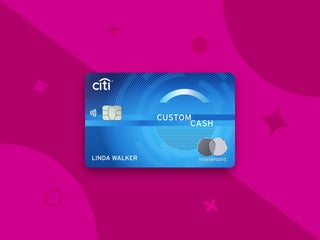Summary
Citi Flex Loans allow eligible cardholders to free up some cash against their credit limit and pay it off at a fixed rate. Here’s what you need to know.
The content on this page is accurate as of the posting date; however, some of our partner offers may have expired. Please review our list of best credit cards, or use our CardMatch™ tool to find cards matched to your needs.
For Citi cardholders with a big purchase coming up or some unexpected expenses, Citi provides a way to access funds without applying for a personal loan. With a Citi Flex Loan, eligible credit card holders can take out a loan up to their credit limit, with a fixed APR and flexible repayment periods.
If your credit card APR is high and you are hesitant to carry a balance, a Citi Flex Loan can be a great option for making fixed payments – especially if you can score a low interest rate. Read on to learn more about how these loans work.
What is a Citi Flex Loan?
Citi Flex Loans are a unique offering from Citi, allowing credit cardholders to take out a loan with a fixed APR up to the amount of their credit limit. Plus, there is no origination fee, and you can choose from several repayment term lengths. Cardholders must be targeted for one of these loans, but they will have the ability to choose their loan amount and payment timeline based on their immediate needs.
If you are a Citi cardholder with a large purchase to make or unexpected charges to pay off, a Citi Flex Loan can be a great way to leverage your current credit line and pay over time. Flex loans don’t require an additional application or hard pull to your credit and can be much more accessible than a standard personal loan.
How a Citi Flex Loan works
To score a Citi Flex Loan, you must first receive an offer for the service from Citi. You might see a banner advertising a loan when you log in to your Citi account, or you might get an email promoting an offer tailored to you.

If you haven’t received a targeted offer for a Citi Flex Loan, you can log in here to check for any available offers. Unfortunately, not every cardholder will be eligible.
If you do find an offer – and the APR works for you – then you can begin to customize your loan terms. Citi cardholders can select a loan amount with a minimum of $500 and a maximum of their credit limit (unless Citi has customized another maximum amount based on creditworthiness). You can also select your repayment term, from 12 months to 60 months. Citi will provide you with your monthly payment based on the terms you input.
Sample loan payments (9.99% APR)
| Loan amount | 12 months | 24 months | 36 months | 48 months | 60 months |
| $500 | $44 | $23 | $16 | $13 | $11 |
| $1,000 | $88 | $46 | $32 | $25 | $21 |
| $2,000 | $176 | $92 | $65 | $51 | $42 |
| $3,000 | $264 | $138 | $97 | $76 | $64 |
| $4,000 | $352 | $185 | $129 | $101 | $85 |
| $5,000 | $440 | $231 | $161 | $127 | $106 |
Once you’ve accepted a loan, you can opt for your funds to be transferred into any linked bank account or for a paper check to be mailed to you. You won’t be charged any sort of origination fee with a Citi Flex Loan, so you can rest easy until your first payment.
Because a Citi Flex Loan is linked to your credit card, making your monthly payments is incredibly straightforward. The payment amount will simply be added to your minimum card payment each month.
However, the tie between flex loans and card payments does come with some drawbacks. For example, if you’d like to pay down some of your loan early, you will first have to pay off the balance on your card for that month.
This is because Citi payments made on an account with both a statement balance and an ongoing flex plan are treated with a highest-APR-first priority. So, assuming the APR on your flex loan is lower than the APR on your card balance, your payments are first applied to the card balance and then to the flex loan. This means cardholders hoping to pay off their loan early will need to consider any other card debt they are carrying.
Citi cardholders should also note that taking on a Citi Flex Loan against their credit limit will lower how much they can put on that particular card in a pinch.
Should you take a Citi Flex Loan?
Since Citi Flex Loans are offered according to your credit limit, there is not a hard pull associated with the loan. However, you should carefully consider pros and cons of taking out a Citi Flex Loan against taking out a personal loan if you have a large expense coming up.
Pros:
- Easy access to a loan up to your credit limit
- There is no credit check required
- You can score a lower APR than your credit card
- No origination fee like with a traditional personal loan
Cons:
- APRs can be higher than standard personal loans
- Must be targeted for an offer (not available to all cardholders)
- Reduces your available credit
- Can negatively impact your credit utilization ratio
According to Bankrate, personal loan rates typically range from 6 to 26 percent depending on your credit score. So, if you have top-notch credit, it is possible you can land a better interest rate if you opt for a more traditional personal loan. Though you’ll likely pay an origination fee and suffer a hard pull to your credit, a personal loan might save you more in the long run.
Final thoughts
While Citi Flex Loans often carry a higher APR than a personal loan, they offer great peace of mind to Citi cardholders who need funds in a pinch. You can leverage your current credit limit to take out a loan without a hard pull to your credit and pay it off in fixed amounts as you pay your credit card bill.
Editorial Disclaimer
The editorial content on this page is based solely on the objective assessment of our writers and is not driven by advertising dollars. It has not been provided or commissioned by the credit card issuers. However, we may receive compensation when you click on links to products from our partners.



